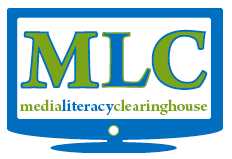As my career as a teacher develops, I find myself looking for more ways in which I can be an advocate for my profession. Staying up to date on policy initiatives can be tough to do due to reading through political news and jargon. For issues relating to sexuality education, The Sexuality Information and Education Council of the United States is a fantastic resource to do just that!
SIECUS was founded in 1964 and provides fact based information relating to sexuality and sexuality education, and is recognized as a leader in those fields. Information from SIECUS is geared towards educators and other professionals, the general public, and parents. Information comes in the form of fact sheets, policy updates, special reports, community action updates, research updates, profiles based on specific states, etc. Additionally, SIECUS has other websites under its umbrella containing lesson plans, community action tips, and more. NOTE: Information about these sites should be appearing in posts throughout the first part of 2011!
All information provided by SIECUS is detailed and comprehensive. I checked out the link for the state profile of Massachusetts, and was almost overwhelmed with data and information! State laws relating to sexuality education in public schools (opt out laws), results from recent Youth Risk Behavior Surveys, other sexual health statistics, programs in public schools (with information on submitting information from your district), and Federal funding. It would be interesting to compare your state to other states, noting similarities and differences. College students could look for patterns based on the political landscape, too.
Of particular importance to health educators and others wishing to impose policy change is the contact information on organizations that both support and oppose comprehensive sexuality education. This is helpful to identify allies and opponents, and makes it easier to further research specific stances, policies, and initiatives that organizations have been known to support or oppose. A list of major newspapers in Massachusetts is provided, but local papers are not included.
SIECUS provides a Community Action Kit for those willing to undertake the role of advocating for sexuality education. A more detailed post on the Community Action Kit will be written; I may blog about my experiences using it as a step by step process during 2011, but considering everything else I have on my plate, no promises!
All in all, SIECUS is a must read website and an organization that can help put accurate information into the hands of those who need it most. More health educators and public advocates need to take it upon themselves to publicly address issues relating to sexuality education! I hope to do the same this year. I only wish that the website would provide contact information for advocates who have undergone he task of creating change in their communities. Collaboration and the sharing of ideas among advocates can only help those new to policy change, but I can see that the SIECUS website might not be an appropriate forum for this sort of information.
As always, please e-mail me with any questions, comments, or concerns.
Note: All information relating to SIECUS was obtained from its website, linked above.
Seven Mind Mapping Tools to Try This Year
1 year ago




